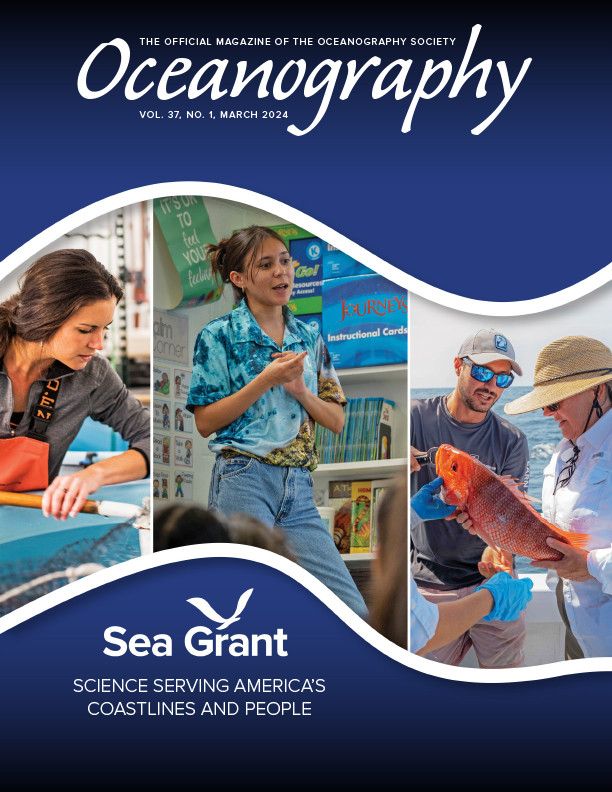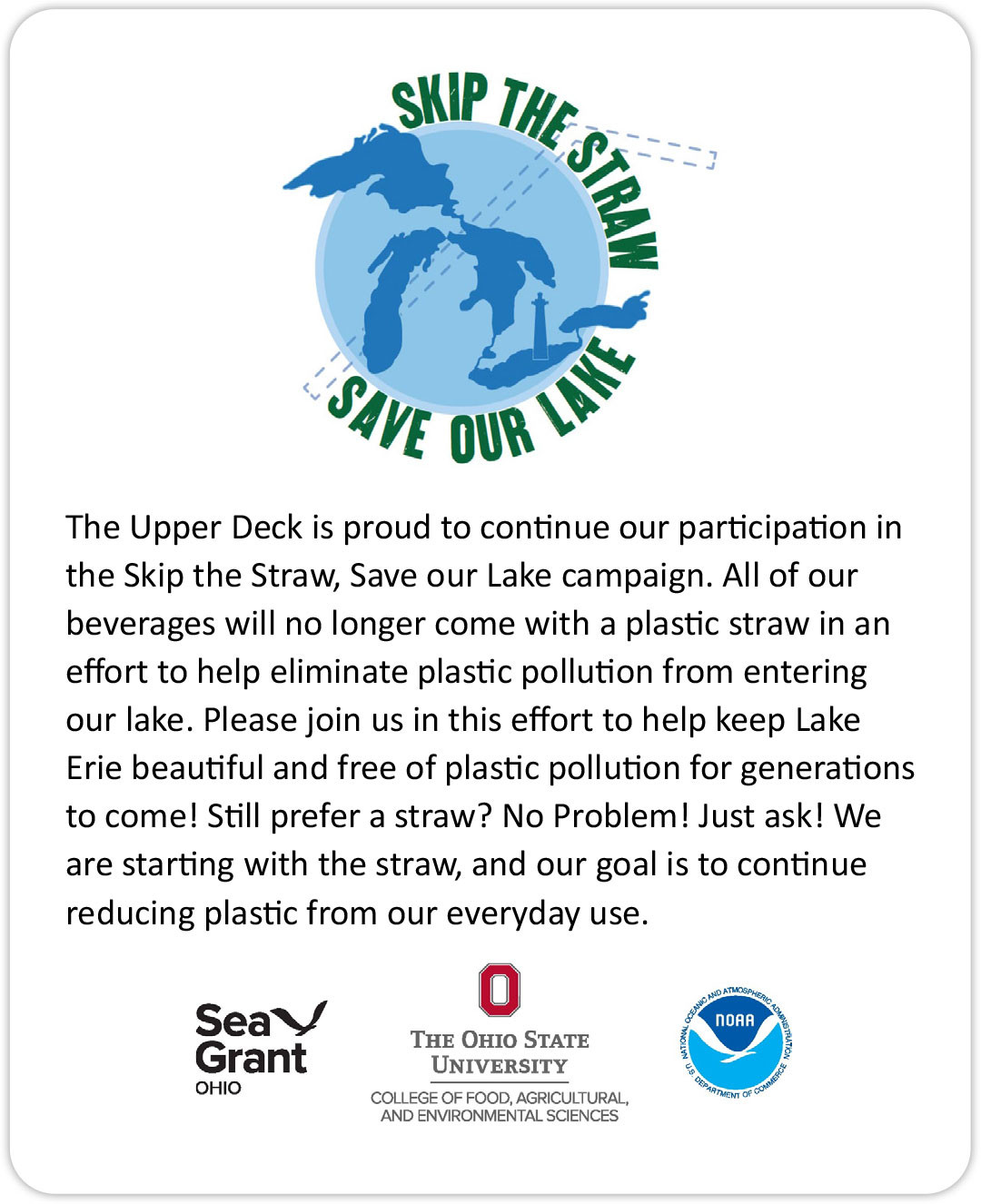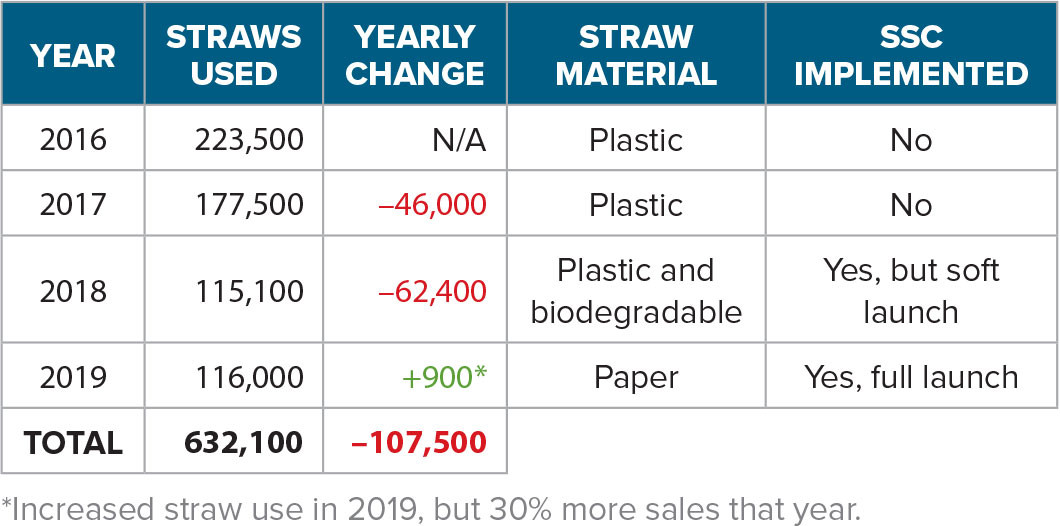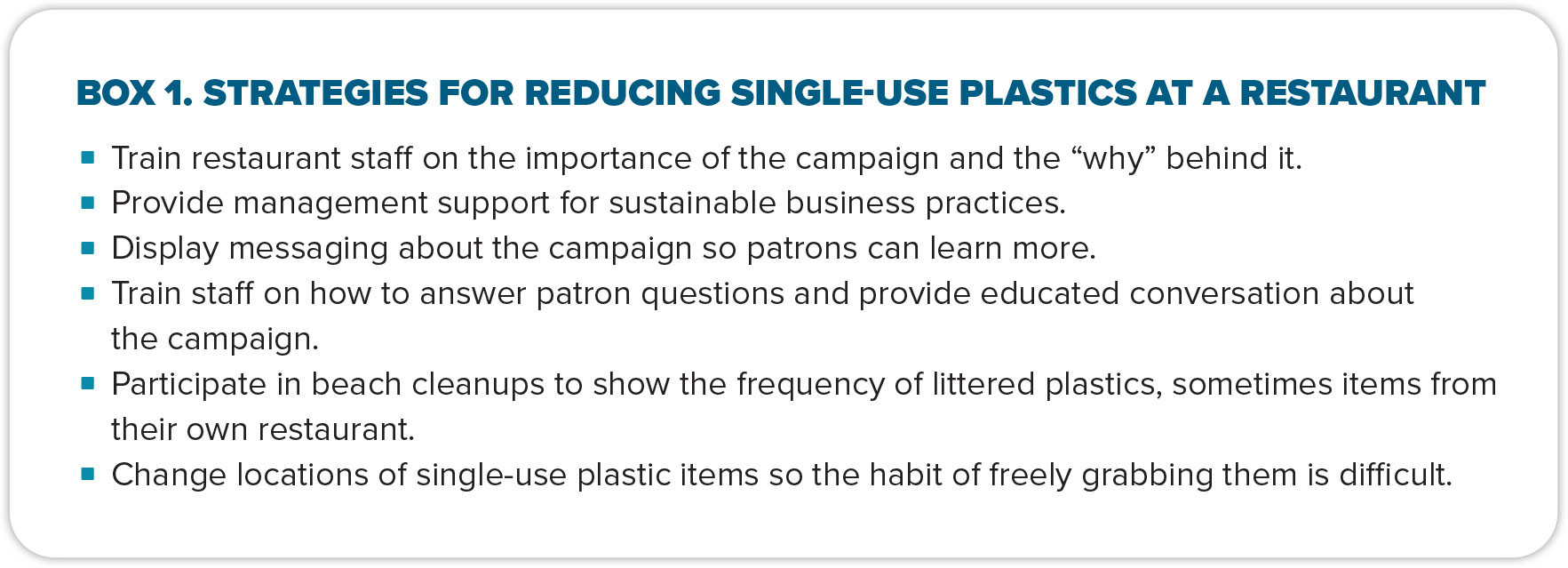Full Text
Plastics, one type of marine debris, account for nearly 90% of beach cleanup litter collected (Surfrider Foundation, 2022), with 22 million pounds (10 million kilograms) entering the Great Lakes annually, half going into Lake Erie (Hoffman and Hittinger, 2017). Lake Erie provides drinking water for 12 million people and supports a $12.9 billion coastal tourism industry (USEPA, 2022). Plastic is hazardous to aquatic life through entanglement, ingestion, and associated contaminants (Derraik, 2002), and negatively impacts Ohio’s economy (NOAA Marine Debris Program, 2019).
South Bass Island, Ohio, the study area for this project, is home to 525 year-round residents and a destination for 750,000 tourists each summer. Island business plastics use, limited waste management, and lack of visitor awareness about the negative effects of plastic pollution led to heavily littered coastal areas. Island residents, many of whom are local business owners, frustrated with the litter, decided to embrace strategies to reduce the amount of plastic pollution. As a place to start, owners and managers from the Boardwalk Family of Restaurants (BFR), the island’s largest restaurant establishment, decided to reduce single-use plastics in their restaurants, beginning with straws. In 2019, Ohio Sea Grant and BFR implemented a Skip the Straw campaign (SSC) focused on reducing plastic straw use.
Menu messaging informed patrons as to why the restaurant was skipping straws (Figure 1). Two staff trainings, led by Ohio Sea Grant, provided information about the issue, highlighted alternatives to single-use plastics, and offered suggestions on how to answer patron questions. Plastics are often seen as only an ocean issue, and people do not think they are a problem in freshwater. Therefore, we focused on training staff to provide information relevant to Lake Erie. Beach cleanups were used to make staff more aware of frequently found trash items, some of which came from their restaurants.
|
|
Before the SSC, BFR put plastic straws in every drink. Upon implementation of the SSC, staff were trained to give customers a paper straw only when requested. Since 2016, when BFR began tracking straw use, the restaurant has used 107,500 fewer straws (Table 1). An increase of 900 straws used was seen in 2019, despite full launch of the SSC. It was likely caused by a 30% increase in sales that year. BFR continues to only use paper straws upon request. Despite using fewer straws, a financial savings for the restaurant was not noticed because the price per unit of paper straws is more than for plastic straws, increasing net cost.
TABLE 1. Straw data for the Boardwalk Family of Restaurants from 2016 to 2019. > High res table |
At the end of 2019, a focus group with 23 waitstaff, two managers, and one owner was held to gather feedback on the SSC’s effectiveness. As a result of the SSC, restaurant trainings, and beach cleanups, all restaurant staff became more aware of the issue of single-use plastics. Three staff members stopped using straws and all staff switched to using reusable cups or bottles. Focus group results determined customer response to the SSC was positive. Staff stated that lots of conversation around the SSC occurred. For example, customers would ask why paper instead of plastic was being used for straws, or they would request a straw. However, once they were made aware of the local concerns, customers understood the reasoning behind the campaign, and many decided they no longer needed a straw. These educated conversations encouraged pro-environmental behavior changes similar to results shown in a study by Hurst et al. (2023). Waitstaff did not report reduced tips and business was not lost because of the SSC. To support other restaurants wanting to reduce single-use plastics, staff suggested several strategies (Box 1).
|
Staff trainings, beach cleanup events, and the SSC catalyzed staff and customer pro-environmental behavior changes that led to reduced plastics use. While marine debris information is often targeted to ocean communities, tools created for this project were Lake Erie focused, allowing people to identify with the issue locally and to see how their actions impact the island community and the quality of its water.




 > High res box
> High res box